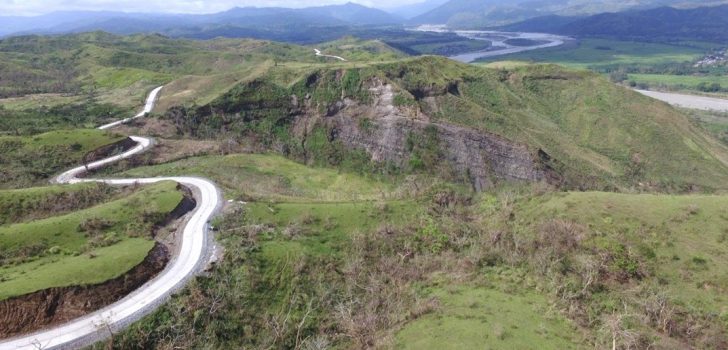 Aerial view of the Bulanao-Amlao Farm-to-Market Road (FMR) in Tabuk City, Kalinga funded under the DA’s PRDP. (Photo by RPCO 2 InfoACE Unit)
Aerial view of the Bulanao-Amlao Farm-to-Market Road (FMR) in Tabuk City, Kalinga funded under the DA’s PRDP. (Photo by RPCO 2 InfoACE Unit) Cordi maintains position as top implementer of infra projects in North Luzon
From a total of P12.4 billion peso worth of infrastructure subproject (SP) proposals coming from Luzon A cluster provinces, those in the Cordillera Administrative Region (CAR) were able to submit close to P5 billion worth of SPs as of June 2017 for funding under the Department of Agriculture’s Philippine Rural Development Project (DA PRDP).
In effect, CAR still maintains its status as the leading region in North Luzon cluster in having proposed the most number of SPs compared to the other regions from the cluster.
The cluster has 117 SPs under the PRDP’s infrastructure development component, received and approved within the last four years. Out of the said 117 SPs proposed, CAR was able to have approved 35 SPs with an aggregate cost of P1.65 billion.
Of the approved SPs, 21 are by now being implemented. These comprises of 8 farm-to-market roads (FMRs) and 13 miscellaneous construction works for building coffee trading posts, slope protection and warehouses. In sum, all 21 SPs are worth P1.32 billion.
On the other hand, 14 subprojects are still under the procurement stage after receiving the No Objection Letter (NOL) allowing the proponent Local Government Units to proceed with procurement processes.
The rest of the SPs are still pipelined, five of which have just been endorsed for issuance of first NOL, while only one has just been approved by the Regional Project Advisory Board (RPAB) for submission to the Project Support Office, Luzon A Cluster for review and/or endorsement to the National Project Coordination Office for NOL 1 issuance.
Meantime, another 21 subprojects are under feasibility preparation, 16 of which are again FMRs while 5 are FMRs with bridge.
The infrastructure development component aims to improve the links from production areas to markets to enhance the efficiency of transporting agricultural products. Moreover, it aims for higher productivity as a result of increased cropping intensity and yields, food securty and improved health from readily available potable water system and lower post-harvest losses resulting in higher volume of outputs and more efficient support facilities. (Mabel B. Zabala, DA-PRDP RPCO CAR InfoACE)
